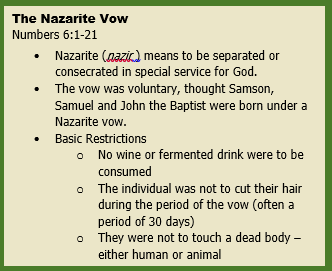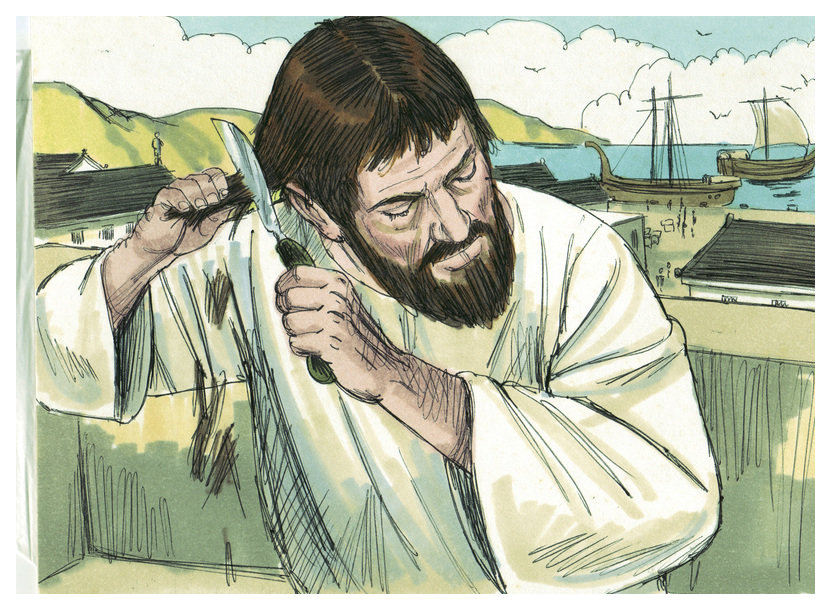The Nazarite Vow

In Lectures 2,3, and 4, Dr. Meredith describes how Paul and his companions participated in a Nazarite vow.
In Numbers 6, Moses was inspired of God to lay out the requirements of a vow of special consecration to God, called a Nazarite Vow. Generally men took this vow for a specific period of time, after which, there was a ceremony marking its conclusion. During the time of their vow, the men were not to cut their hair or shave, nor were they to taste any grape product, including wine, fresh grapes, or raisins, nor were they to touch anything that would make them ceremonially defiled.” (Ogwyn, John. “A Tale of Two Nazarites”)
.jpg)
James propose to Paul to sponsor and pay the expenses of the Nazarite vow for some of the men in order to prove to Paul’s detractors that he is loyal to the Law (21:22-25).
As Mr. Meredith explains in Lecture 2, the book of Acts describes how Paul had apparently taken a Nazarite vow when he cut his hair off at Cenchreae. But there was another major character in the New Testament who lived under a Nazarite vow. That man was John the Baptist.
The two examples in the Old Testament of men who lived under a Nazarite vow were contemporaries, and they served God in leading Israel. But they were very different men.
To read the full story of these two men, just go to Mr. John Ogwyn’s article, “A Tale of Two Nazarites”.
If you’d like to do more research into how the Nazarite vow became woven into Jewish culture in history, a good place to start is the Jewish Encyclopedia. Follow this link for an article on this topic.



